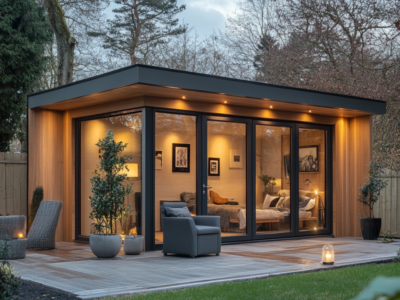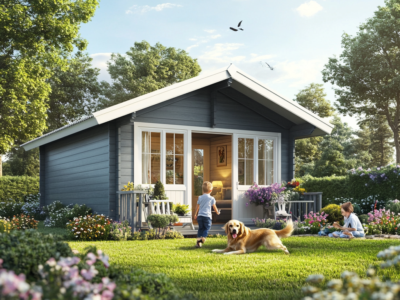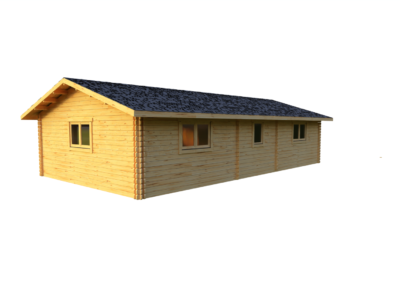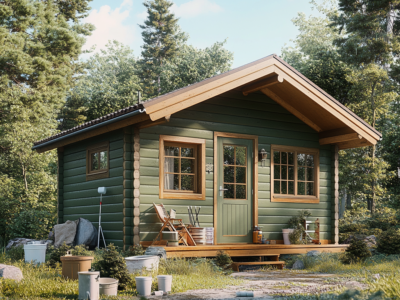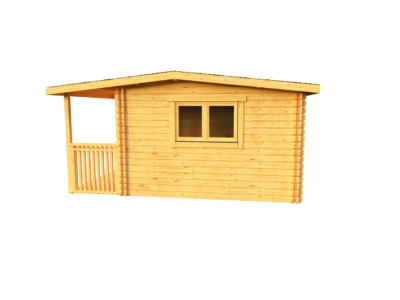No matter the purpose – workspace, garden tools, home gym or games room – an efficient shed design is an asset to any outdoor building project. However, in order to maximize storage capabilities it may require some design modifications.
For instance, when installing plumbing or power, always consult local building regulations first. And when installing heat and Wi-Fi services, always go for solutions with easy plug-and-play features.
Shelving
Store items off of the floor to make them easily accessible, reduce tripping hazards and ensure proper organization. Install wall organizers with slatted wall pockets or series of bucket holders to store long-handled tools vertically such as rakes, hoes or shovels; mount a tool tower near your shed entrance for quick access when working outside; add shelves into nooks for pots, bins of seedlings or supplies or as table work surfaces – or consider creating shelves within an already established shed environment!
Reuse old wooden tables, dressers or desks to create a workspace and storage area for gardening equipment. Old desks with drawers provide extra storage capacity – perfect for organizing everything from tools and gloves to string and small vases! Mobile work stations such as rolling carts can even serve as work stations when tending plants on decks or yards.
Shelving units with adjustable dividers allow you to customize the space according to your specific needs. Store large pots and containers in one section, cans and buckets in another and tools of various sizes on other shelves – label each section to keep track of what’s stored there; hooks attached to pegboards may also come in handy when hanging items like hoses, shovels and garden tools from hooks mounted there.
If your shed contains numerous chemicals, be sure to mark them with labels or paint them brightly to help identify and prevent accidental spills or messes. Clear plastic shoe dividers can help organize seed varieties more easily when planting flowers, vegetables or herbs. Seasonal rotation of items used most can maximize function – move gardening tools from spring to summer as you need them while barbecue gear moves to the back, then rakes are front for fall before snow shovels return for winter storage.
Workbenches
Instead of restricting the usefulness of your garden room to its floor space, consider adding ladders or storage racks on walls, rafters, or ceilings as additional means of storage – these options provide easy-access storage solutions for large equipment that would quickly consume floor space in a shed.
Blur the lines between indoor and outdoor spaces to extend the usable area of your garden room. This design features a large French door leading out onto a patio, creating easy passage between the shed and outdoor dining or seating areas. A sedum-planted roof gives this shed added color in the landscape.
Storage Racks
Utilizing wall-mounted racks to store garden tools such as rakes and spades is an ideal way to keep these tools out of sight but within easy reach. They’re also perfect for smaller items like potting soil or gardening gloves. Mounting directly to studs provides maximum stability; otherwise use wall anchors designed specifically to support heavy loads to make sure the rack won’t come tumbling down when filled with tools.
Open shelving can be an efficient storage solution in sheds and garden rooms with doors, providing easy access for often used items like gardening supplies or outdoor gear that take up valuable floor space. Furniture designed with built-in storage features like ottomans with storage drawers or benches equipped with under-seat compartments are other helpful options that may help create a neater environment.
One of the key components to creating a functional and well-organized garden room is understanding what purpose each space will serve. This will enable you to design and implement custom storage solutions tailored towards its main use; for instance, home offices require wall-mounted shelves and compact desks while hobby rooms demand versatile solutions that accommodate materials and equipment storage solutions.
Blurring the boundaries between indoor and outdoor space is an increasing trend in backyard design. By adding a patio or deck just outside your garden room, incorporating natural transitions between the two spaces becomes easy through careful furniture placement, area rugs delineating different zones or temporary partitions like folding screens.
Tool Hangers
Rule number one in shed storage should be keeping floor space clear to avoid an inaccessible maze of clutter. Instead, utilize wall space with hooks and racks designed to store garden tools upright – lengths of dowel mounted at an angle onto a sturdy wooden backing board are an efficient solution that save space by holding two or more tools per hook; similarly, drill holes into hand tools’ wooden handles before threading through twine or leather thong to form simple hanging loops.
Tool tower racks offer an efficient solution for organizing long-handled tools such as rakes and shovels more efficiently, such as the Rubbermaid model shown here which can accommodate up to 40 tools at the same time. When shopping, look for models with easy installation (without needing tools for assembly) as well as durable construction that won’t rust or dent easily.
To determine the appropriate height at which to mount a rack, take measurements of all tools being stored and lay them out together on a tabletop. Add 12 inches for breathing room when storing these tools together – adding 12 inches also ensures each has enough breathing room so as not to strike against each other during storage. Also important when purchasing storage solutions is flexibility so they can be reconfigured according to changing needs over time.
A patio or deck outside your garden room provides additional storage without invading living space, expanding usable floor area. Consider including comfortable outdoor chairs and sofas as well as tables and chairs or barbecue grills to extend entertaining opportunities. Alternatively, wall-mounted planters provide another natural extension of indoor living by holding flowers or small shrubs as a natural extension of indoor space.
Pegboard
Pegboards are an efficient way of using up unused wall space. Used to hang tools, shelves, bins and more from your peg board wall space is easily usable by the entire family! Installation is quick and straightforward as long as studs are found and fastened securely into them – otherwise the board could collapse under its own weight! To find these studs either use your hands or invest in a stud finder tool.
Dependent upon the size and purpose of your garden building, there are various kinds of pegboards to suit every need: plastic, wood, or metal. Plastic ones tend to be lighter but don’t always support heavy tools; wood and metal pegboards offer greater support while being more expensive than their plastic counterparts.
Add an elegant touch to the entryway of your shed by framing the pegboard with maple trim boards for an eye-catching display. Mount it behind any door for quick and easy access.
If you have a large shed, make the most out of its space by hanging a grid of pegboards and using hooks and other organizers to organize tools and supplies. Cubbies may be helpful as well for cubby storage purposes and message center posting notes. Pegboard panels may also be used in kitchen cabinets and drawers to store tools and cooking utensils while limited cabinet and drawer space allows using pegboard to organize pots and pans before placing a basket or rolling cart on top to store extra linens or dishware items.

